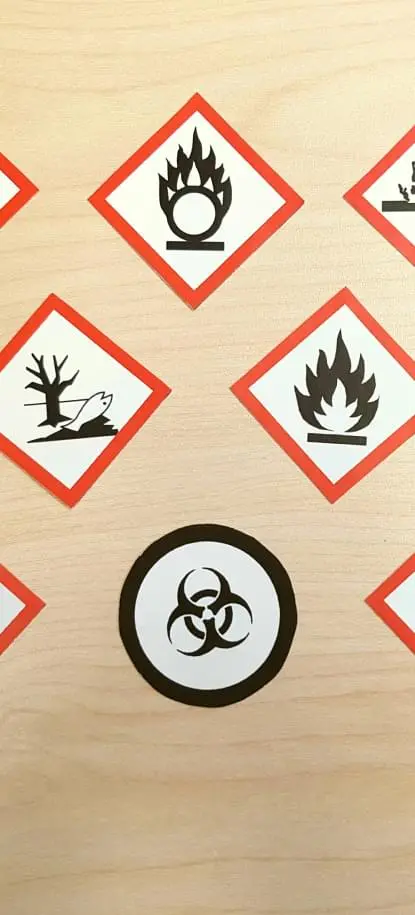




Quick Links:





Safety Data Sheets (SDSs) are an important part of any laboratory safety program in communicating information to chemical users. SDSs are documents that provide detailed information for the hazards associated with a specific chemical or chemical mixture.
As per the KAUST Laboratory Safety Manual,it is the responsibility of Principal Investigators and laboratory managers to ensure that staff and students working in laboratories under their supervision have obtained required health and safety training. All laboratory workers must have access to SDSs (and other sources of information) for all the hazardous chemicals used in their laboratories.
All laboratories are required to have immediate access to SDSs for every chemical used or stored in that lab.
The identity of the chemical substance.
Physical and chemical characteristics.
Primary routes of entry.
OSHA Permissible Exposure Limits (PELs) and ACGIH Threshold Limit Value (TLV)
Carcinogenic and reproductive health hazard information.
Precautions for safe handling and use (including PPE)
Spill response procedures.
Emergency and first aid questions.
Transportation codes for specific materials.
Date the SDS was prepared.
Managing the diverse range of chemical and hazardous substances within an organization is an important aspect not only from a safety perspective but an efficiency aspect as well. The SALUTE's chemical inventory module is used at KAUST and is managed through the Health, Safety, and Environment (HSE) Department. This Chemical Inventory module allows users to create individual inventories assigned to their specific locations/laboratories with one or more owners and catalog all of the chemicals in use within an entire organization using the Chemical Library feature.
In addition, users are able to generate Safety Data Sheets (SDSs) directly from the SALUTE platform and send them to anyone requesting the information. SALUTE's Chemical Inventory system is powered by a partnership with ChemWatch, one of the most comprehensive databases in the world. This partnership provides SALUTE users seamless access to chemical details based on CAS, chemical name, or other identifiers.
In order to take advantage of this system, it is advised that researchers understand how to use and maintain the SALUTE chemical inventory module to further their laboratories productive operations.
Users are able to generate SDSs directly from the Salute platform and send them to anyone requesting the information. Salute's Chemical Inventory system is powered by a partnership with ChemWatch, one of the most comprehensive databases in the world.
